This NY Cop ran a red light going almost 90 MPH and killed a young father. He still has his badge
Family of man killed by Troy cop still waiting for answers one year later.
A state law allows New York Police officers to break traffic rules, even when their poor driving decisions claim the lives of innocent people.
A joint investigation between the S.I. Newhouse School of Public Communications, Central Current and USA TODAY Network-New York.
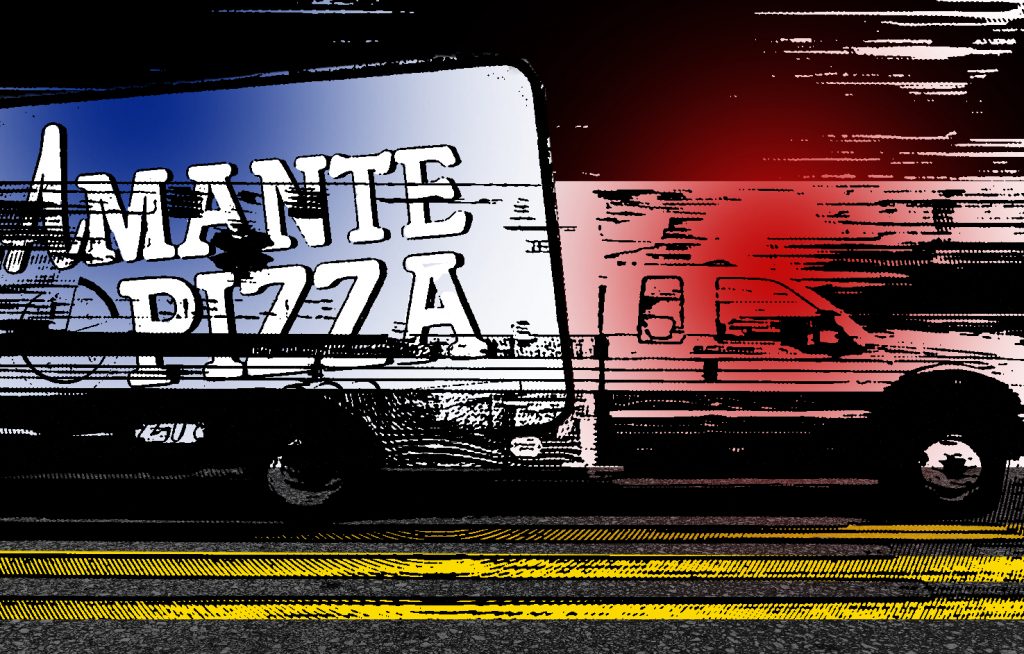
In a sterile hospital room just before 3 a.m., Sabeeh Alalkawi’s father started counting down the hours until sunset.
His son was dead. He was in shock.
And duty sat heavy on his heart: It was his responsibility to return his son’s soul to Allah by burying him swiftly. Waleed Alalkawi had just until this terrible day’s end to accomplish the task.
State police had other priorities. Sabeeh was dead because a New York police officer slammed his patrol car into the young man’s sedan, killing him almost instantly.
Half a mile away, investigators combed jumbled wreckage for details. Here, in this cold hospital room, a medical examiner was ready to take the body for an autopsy. No autopsy was needed to understand what killed Alalkawi, though.
Another police officer in New York had crashed their patrol car into someone or something with devastating consequences ― just one more example in hundreds of cases being examined in a deep investigation by USA TODAY Network-New York and Syracuse University. The reporting team is looking at cases across New York state, including the death of Alalkawi in Troy.
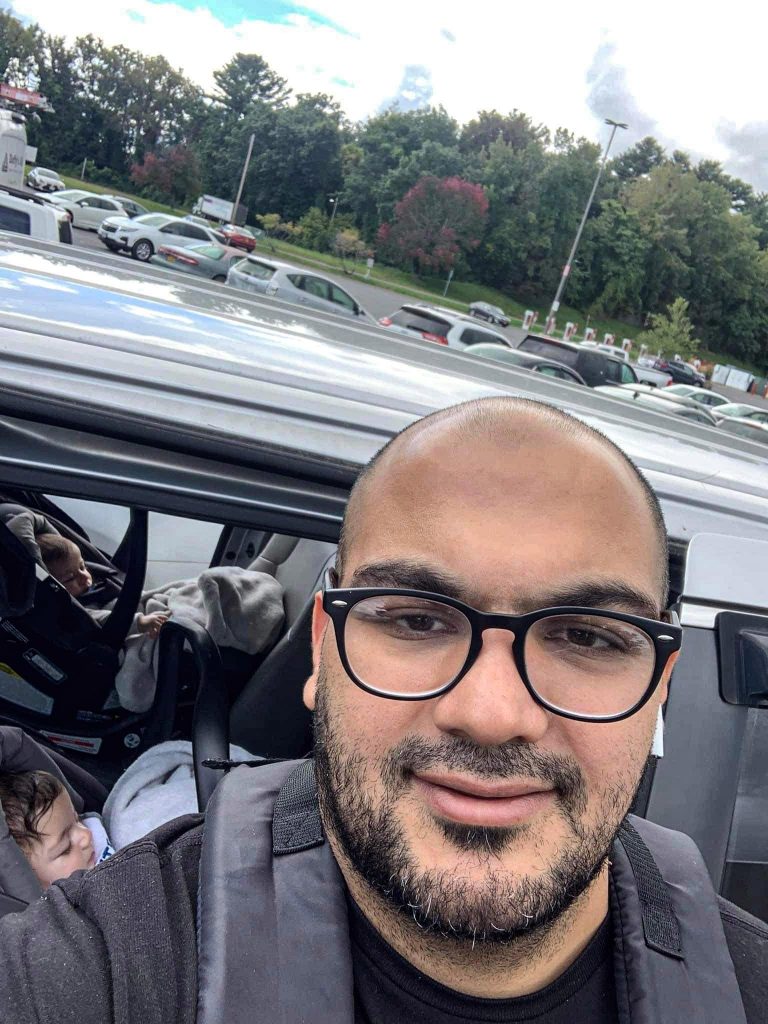
Muslims bury their dead as they are, with few exceptions. Hours after a death, family members gather to clean the body ― now little more than an empty vessel that carries the face of someone they loved ― working quickly to prevent its soul from lingering untethered for too long.
They dig a grave themselves and position the body at the bottom, laying it on its right side to face the holy city of Mecca. They pray that their beloved is accepted into whatever universe follows this one. And then, only after this duty is fulfilled, do they allow themselves to grieve the person they lost.
This is what Alalkawi’s father knew. Now, it seemed Waleed and the medical examiner were on their own crash course: Faith colliding with the potential for justice.
He had to make a choice.
Can you bring his body back before the sun falls, the father asked?
NY allows police to break traffic rules. What happens when they crash?
Across New York, a police officer can hurtle down city streets, snub stoplights, crash their car and walk away unscathed — job and reputation intact — even when those collisions kill or maim innocent people.
Troy Police Officer Justin Byrnes sent his 2.5-ton police cruiser barreling through a city intersection at about 88 miles per hour just before he rammed into Sabeeh Alalkawi in the early hours of Feb. 22, 2023.
Our “Driving Force” investigation, assisted by The Central Current in Syracuse, found that a state law that allows police officers to break traffic rules when racing to emergencies is being used to protect them from discipline when they make poor driving decisions and smash their cars along the way.
Byrnes, who was sworn in as a Troy police officer in 2019, is so far no exception.
He was traveling nearly three times the posted 30 mph speed limit that night, according to collision reports. The officer faced a red light. A vacant three-story restaurant building on the corner of the intersection of Hoosick and 15th streets blocked the view of the drivers from both directions.
Byrnes charged forward anyway.
It is likely that Alalkawi, a 30-year-old pizza delivery driver and new father of twins, never saw his end coming.
The police officer made a last-ditch attempt to hit the brakes, but his SUV zipped over the last 100 yards in less than three seconds, a torpedo destined to crumple almost anything in its path. Sabeeh Alalkawi had no chance.
Byrnes was involved in at least four other incidents, the records show, though it is unclear whether he received any discipline. In one crash, Byrnes reversed out of a parking spot into a civilian’s car waiting in traffic. In another, the officer failed to put his police cruiser in park when he hopped out to chase a suspect on foot. The cruiser rolled into another parked car.
The Troy City Council called a special public meeting with law enforcement officials in October. There, Troy Police Chief Daniel DeWolf insisted his officers know they must slow down before entering an intersection ― especially one with a red light. “If you don’t make it to the call, you’re not helping anyone,” he said.
So, will Byrnes face consequences for his choices on duty the night Alalkawi was killed? Unless an investigation by the New York State Attorney General’s Office determines he acted recklessly or with negligence, the police officer will not face criminal charges because of the state law that offers him broad immunity when responding to a call.
A year after Alalkawi’s death, his family is still waiting for that decision.
The Troy Police Department said it will only conduct its own internal investigation once the AG’s report is complete. Until then, Byrnes is still working for the Troy Police Department — on desk duty.
Alalkawi’s family declined interviews for this story but shared notes and photographs through their attorney to show the impact his death has had on them. We asked questions and communicated back-and-forth this way.
A New York State Police reconstruction report found Byrnes responsible for their tragedy, saying his decision to drive through the red light without caution was the “primary contributing factor” for the crash.
Top police officials in Troy refused to answer questions or comment directly about what happened. They declined to say whether Byrnes turned his siren on as required or if there is any police footage of the collision. The NYSP reconstruction report said it is unknown whether the sirens were activated, and makes no mention of police footage collected from the crash.
Troy Police also declined to discuss how the agency enforces safe driving behaviors among its officers. A public records request turned up over 100 crashes involving Troy police officers over the last decade.
Byrnes was involved in at least four other incidents, the records show, though it is unclear whether he received any discipline. In one crash, Byrnes reversed out of a parking spot into a civilian’s car waiting in traffic. In another, the officer failed to put his police cruiser in park when he hopped out to chase a suspect on foot. The cruiser rolled into another parked car.
The Troy City Council called a special public meeting with law enforcement officials in October. There, Troy Police Chief Daniel DeWolf insisted his officers know they must slow down before entering an intersection ― especially one with a red light. “If you don’t make it to the call, you’re not helping anyone,” he said.
So, will Byrnes face consequences for his choices on duty the night Alalkawi was killed? Unless an investigation by the New York State Attorney General’s Office determines he acted recklessly or with negligence, the police officer will not face criminal charges because of the state law that offers him broad immunity when responding to a call.
A year after Alalkawi’s death, his family is still waiting for that decision.
The Troy Police Department said it will only conduct its own internal investigation once the AG’s report is complete. Until then, Byrnes is still working for the Troy Police Department — on desk duty.
‘Danger zone,’ but NY officer barreled into it at speed.
Just north of Albany and across the Hudson River, where New York State Route 7 becomes Hoosick Street, a royal blue sign welcomes visitors and residents alike to the city of Troy.
HOME OF UNCLE SAM, it reads in bold white lettering. A portrait of a familiar American patriot stares back at you, a top hat wrapped in a blue-and-white banner of stars, one finger pointing firmly in a call to action.
Samuel Wilson, the inspiration behind the iconic image, was one of the earliest American settlers of this rust belt city in 1789 — building his community with bricks he packed together from clay deposits off Mount Ida. Locals have clung to the identity. There’s an Uncle Sam bowling alley, the Uncle Sam Bikeway and even an Uncle Sam bus stop.
Troy rose as an early industrial center for the nation, producing iron and steel that workers would float down the river to New York City. Later, it became a manufacturing stronghold for shirt collars and the birthplace of an all-female union crucial to the labor movement.
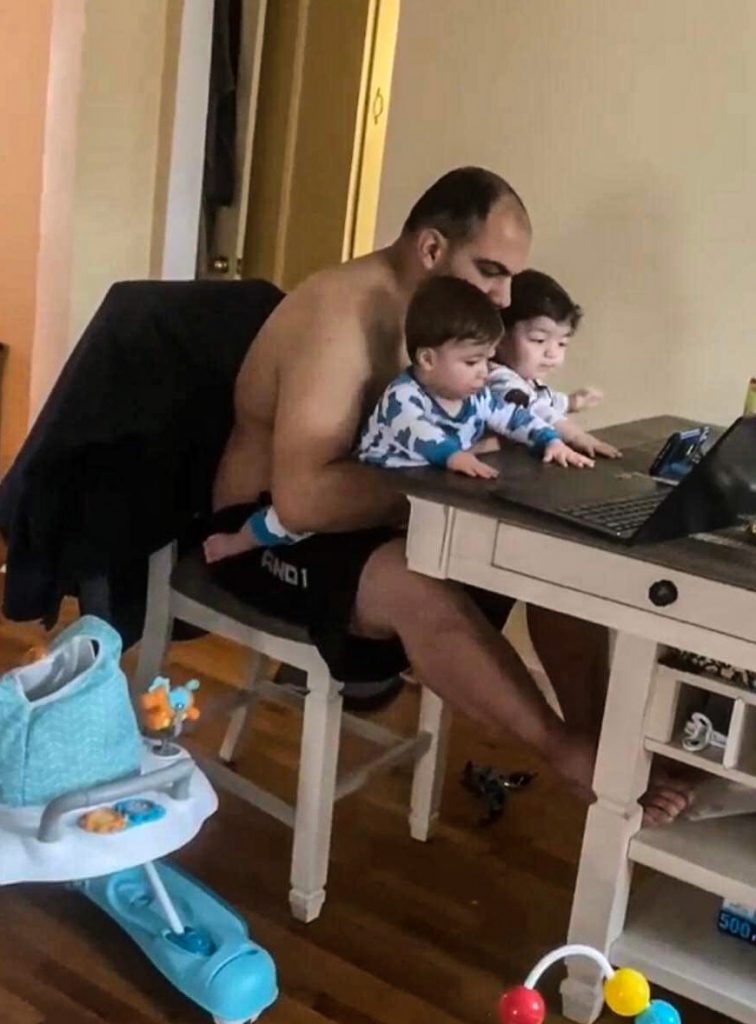
Today, the city is a hub for video game development, fueled by the presence of Rensselaer Polytechnic Institute and other factors. It’s home to about 51,000 people.
At the center of it all is the intersection where Alalkawi was killed. Hoosick Street is a four-lane, two-way strip of asphalt that connects Troy to the rest of the state. On one end it bleeds into a highway leading to Latham, New York. On the other, endless pavement runs all the way to Vermont.
It is arguably the city’s most dangerous road.
On social media, in news stories and in traffic studies stretching back at least a decade, residents said they go out of their way to avoid the congested corridor because it does not feel safe. After a teenager died in a crash there in 2022, the city council president called the area a danger zone.
The Troy Police Department and many New York police agencies defend their decision to speed to any scene they are dispatched to, even on a perilous road like Hoosick.
In Troy, the police department’s emergency response policy does not limit how fast officers can drive, and DeWolf confirmed the department lacks technology that could track the live speed of its patrol cars. Without it, a supervisor wouldn’t know to ask an officer to slow down, even if they wanted to.
Seconds before Byrnes crashed into Alalkawi, video shows two other Troy police officers heading to the same 911 call tore through the same intersection.
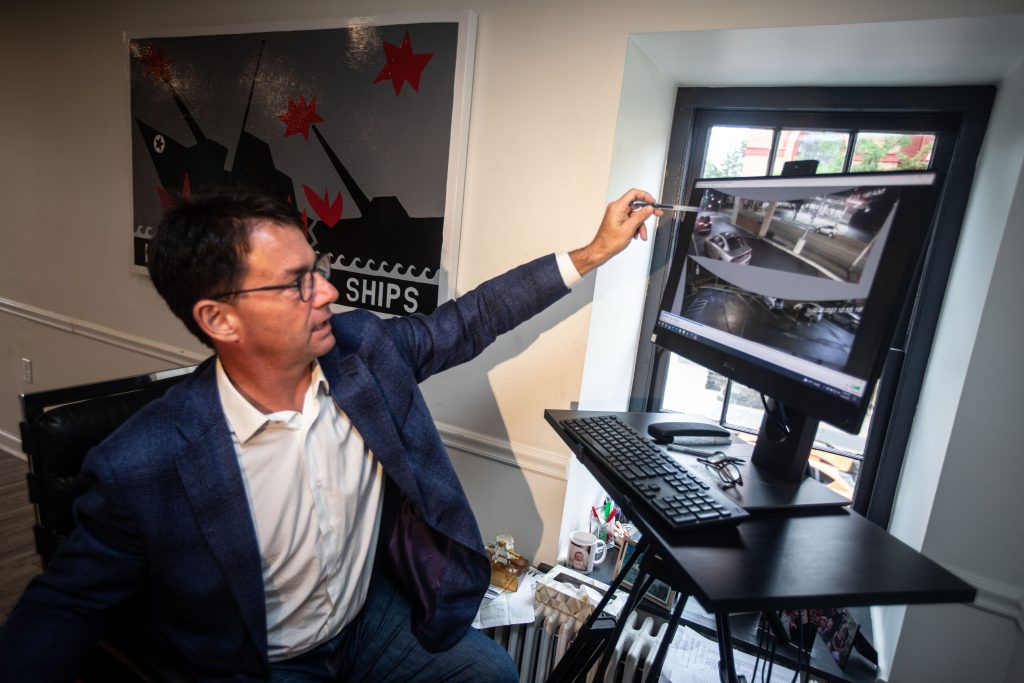
An independent reconstruction expert hired by the family’s attorney used surveillance footage from nearby businesses to clock their speeds. The first officer went through the intersection at 50 miles per hour, nearly twice the legal limit, according to the attorney. The second sped through somewhere in the mid-70s.
An event data recorder unit, or “black box,” recovered from Byrnes’ SUV and analyzed by state police showed he was driving 88 miles per hour five seconds before the crash.
“This isn’t just a rogue police officer,” said attorney Joseph O’Connor, who is representing Alalkawi’s family in a wrongful death lawsuit. “It’s the behavior of an entire department, at least on that night.”
“This is a police department that is deciding we’re not going to be supervised and our officers are not going to be disciplined,” O’Connor added. “… When the behavior of the police officer becomes more dangerous than the event they are responding to, it becomes a problem.”
Troy NY police officer kills man who had a green light
Sabeeh Alalkawi could almost see the pizza shop.
Just down the road, inside a two-story home repurposed into a family-owned restaurant, sat a small-town classic: Amante Pizza.
It’s the type of place where you can look straight back into the kitchen and see workers slinging flattened discs of floury dough up in the air until they come down in perfect circles. A glass display case offers up a dozen or more creations by the slice. Unlike a straight Italian pizzeria, this shop adds a Mediterranean flair: The Amante special layers grilled beef under green peppers, mushrooms, salsa and a yogurt sauce.
Friends had given Alalkawi a job delivering those pizzas. And it was demanding: Sixty-hour weeks with late nights often blurring one day into the next.
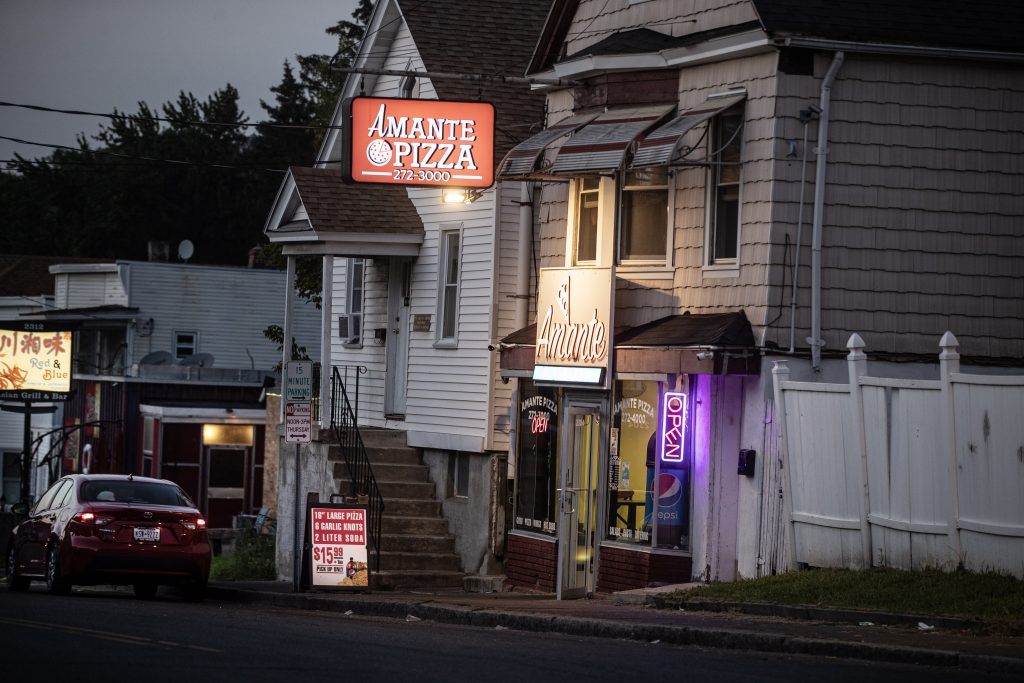
But the tips in his pocket bought food for the growing twin boys waiting for him at home, on this night probably asleep in their beds by now.
Photos capture the trio as inseparable: Alalkawi smiling for a selfie, his sleeping babies strapped into car seats behind him, fleece blankets tucked around their little legs. Alalkawi sitting at the dining room table, one twin perched on each knee, the boys angling for a phone propped up in front of them. Alalkawi, drowsy in bed despite the sunlight, his wide-eyed twins jostling him awake.
This is who he was working for — who he was trying to protect.
It was just before 1 a.m. and the end of his shift was crawling closer with each mile.
On this brisk February night, Alalkawi again climbed into his 2012 Honda Civic and set off toward the pizza shop. It was now less than a quarter mile away. A tomato-red sign and stringy cheese pies beckoned him forward, the road ahead looking nothing but ordinary.
Green light. Empty intersection. Hungry customers waiting.
Alalkawi pushed ahead.
Minutes earlier, a police radio had started chattering across town with its next call: There was a domestic disturbance a few blocks away from Amante Pizza, police said.
Justin Byrnes flicked on the emergency lights of his 2016 Ford Explorer and jolted the steel vessel forward. He was the third in a convoy of cruisers who decided to do the same. Byrnes had been with the Troy Police Department for three years. After that long, any police officer knows well that when someone calls 911, you hurry to respond.
Flying under the streetlights that bring life to Hoosick Street, Byrnes passed an auto shop, a synagogue and an elementary school. The local Hilton Garden Inn and a Popeyes.
The intersection at 15th was next. And Byrnes would soon realize that he set himself on an accelerating trajectory that would defy the red light in his way.
Maybe he saw the pizza delivery driver coming at the last second. Maybe he realized his mistake. Byrnes started pressing down on the brake, but he’d been hurtling down the road at nearly three times the speed limit.
There was not enough time.
His cruiser exploded into Alalkawi’s sedan, ripping the man’s car from the southbound lane and sending it spinning west over a median and into a McDonald’s parking lot.
Twisted metal shrouded Alalkawi’s body as he careened past bystanders. The taillights on his crumpled car screamed against the darkness of the night as it flew through space. Only then did the police officer come to a stop.
‘Verily, unto God do we belong and, verily, unto Him we shall return’
The cemetery was empty. It was the last place Sabeeh Alalkawi’s body would travel that day: after the crash at Hoosick Street, after the cold aluminum table at Samaritan Hospital, after the funeral home and the mosque in Latham.
Someone had recently razed six acres of trees and thicket here to create this holy burial ground for Muslims near East Greenbush. It would be their final stop in this worldly life and the first toward an unseen realm that marks their true home.
Waleed Alalkawi had waited all day for this difficult moment. The medical examiner had released his son’s body in time to be buried before sunset, but only three other people were laid to rest here in this new cemetery. And the father was scared to leave his son so alone.
Nothing about this day made sense. His son was dead. Dead? And a police officer had killed him. Alalkawi’s body was so battered that his two brothers couldn’t bear to help their father with the solemn cleansing ritual their religion asks of them.
Working in solitude, Waleed Alalkawi had scooped handfuls of warm water over torn flesh, washing his son’s body three times. He had folded his son’s arms across his chest, right hand over left, and had wrapped this child of his in three large sheets of white cloth.
He had sat with him as the hearse drifted along city streets, ending at this barren field surrounded by brush. Now, the daylight was fading. It was time to bury his son, whether he was ready or not. He started to dig.
Others would join him in the cold February wind as the sun began to fall. They dug and dug until they were sending shovelfuls of earth above themselves.
Consider what it meant to carve out this tomb for a man taken from them in mere seconds.
Sabeeh Alalkawi’s wife, Dinah, and their twin boys watched from inside a car in the distance. His father and brothers lowered his body into the hand-dug grave, resting it facing their holy city, years before they could have imagined taking on this task.
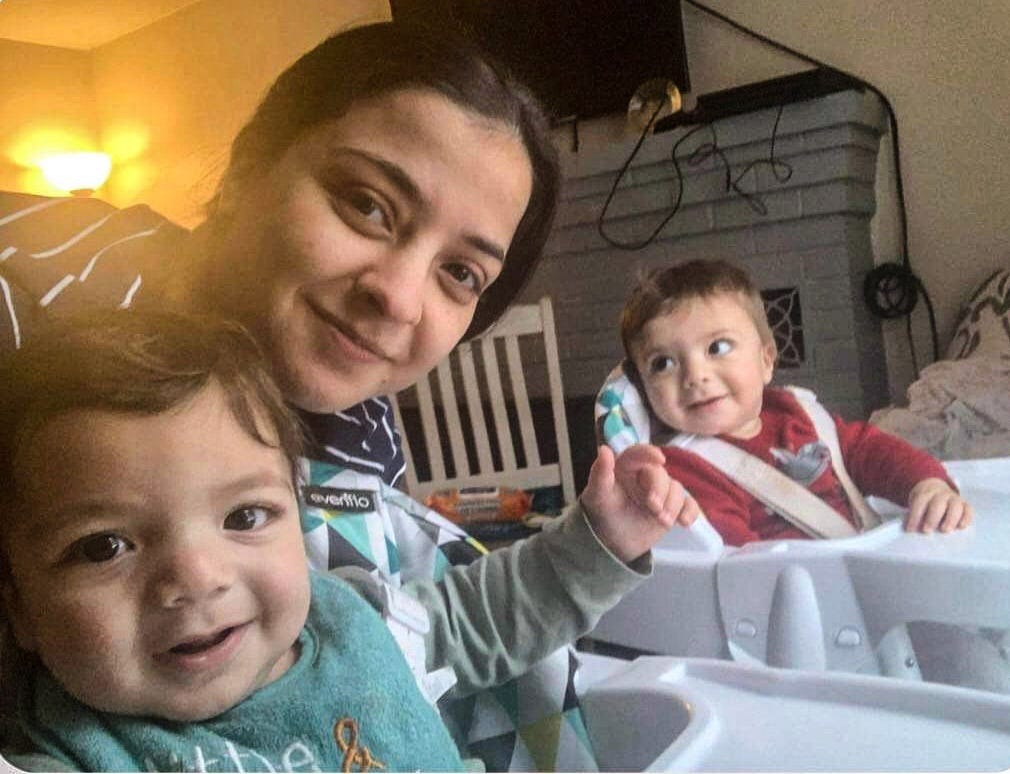
The Qu’ran tells us we belong to Allah and to Him, we shall always return. Alalkawi is not alone ― even in this empty cemetery ― because his soul has now reached the afterlife. What comes next for those left behind? The Qu’ran tells us it is patience.
In a final act of love, Waleed Alalkawi covered his son’s grave with dirt, offered a prayer to his creator and rejoined the rest of their family. Dreadful duty complete, he allowed his son to find the peace he was promised.
Even as he waits for his own.
What’s your story?
Have you been hit by a police vehicle as a pedestrian, bicyclist or driver? Have you faced damage to your property in the aftermath of a police vehicle crash?
We want to hear your story, and your questions that remain after the experience. Fill out our online form, or scan the QR code if you’re reading this story in print.
This investigation will continue into the early summer. You may be contacted by our reporters for further details about your experience as part of our continuing coverage of police vehicle crashes.
More from Driving Force
The heavy toll of NY police crashes: Syracuse police officers crashed their vehicles hundreds of times between 2013 and 2022, with some wrecks leaving civilians with lasting injuries.
Do NY police officers get enough training to curb vehicle crashes?Emergency driving training makes up just 3% of an officer’s training time in New York, raising questions about whether that’s enough to curb crashes.
About This Project
This story is part of Driving Force, a police accountability project meant to expose and document the prevalence of police vehicle accidents in New York.
This joint investigation between USA TODAY Network-New York and Syracuse University’s S.I. Newhouse School of Public Communications was supported with funding from the Data-Driven Reporting Project. That project is funded by the Google News Initiative in partnership with Northwestern University-Medill.
This reporting was completed in partnership with Central Current, a Syracuse-based nonprofit newsroom.
Reporters, visual journalists, editors, designers and project partners include Maria Birnell, Evan Butow, Kayla Canne, Daniel DeLoach, Anna Ginelli, Jon Glass, Seth Harrison, Nausheen Husain, Hayden Kim, Annabella Leuzze, Chris Libonati, Beryl Lipton, Tina MacIntyre-Yee, Peter Pietrangelo, William Ramsey, David Robinson, Kyle Slagle, Eden Stratton, Sarah Taddeo and Jodi Upton and Marili Vaca.
